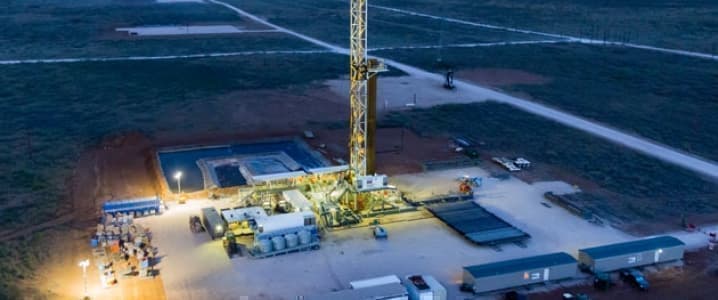Chevron said that it would write down $11 billion in assets in the fourth quarter, much of which is tied to natural gas in Appalachia. The impairment is a sign that the waters are getting pretty rough for the oil and gas industry, due to a combination of supply surpluses, low prices, the struggling and unproven business case for large-scale shale drilling, and the looming threat of peak demand.
The write down comes as Chevron lowered its long-term forecast for oil and gas prices, which directly impacted the value of its assets. “We have to make the tough choices to high-grade our portfolio and invest in the highest-return projects in the world we see ahead of us, and that’s a different world than the one that lies behind us,” Chevron Chief Executive Mike Wirth said in an interview with the Wall Street Journal.
The WSJ says the admission that billions of dollars’ worth of assets are worth a lot less than previously thought could force others to “publicly reassess the value of their holdings in the face of a global supply glut and growing investor concerns about the long-term future of fossil fuels.”
The write down is also an indictment of shale gas drilling in Appalachia. Low prices and a track record of not producing any profits has soured investors on the sector. A recent analysis by IEEFA found that the seven largest Appalachian gas drillers burned through a half a billion dollars in the third quarter. “Despite booming gas output, Appalachian oil and gas companies consistently failed to produce positive cash flow over the past five quarters,” the authors of the IEEFA report said. Related: Is This The Only Way To Make Nuclear Energy Work?
But Chevron is also writing down some value in its LNG project in Canada. “As a result of Chevron’s disciplined approach to capital allocation and a downward revision in its longer-term commodity price outlook, the company will reduce funding to various gas-related opportunities including Appalachia shale, Kitimat LNG, and other international projects,” Chevron said in a press release. “Chevron is evaluating its strategic alternatives for these assets, including divestment.”
Chevron’s impairment charge is not a company-specific anomaly. Schlumberger took a massive $12.7 billion write down in October, largely due to the slowdown in shale drilling. BP wrote down $2.6 billion in assets in October and Repsol took a $5 billion impairment more recently. Repsol also said that it would try to transform its business, aiming to achieve net-zero emissions by 2050.
In fact, part of the reason why companies are increasingly acknowledging the likelihood of lower long-term prices is because of the energy transition. Supplies are abundant, largely because of the hundreds of billions poured into shale. But on the other side of the ledger, long-term demand looks increasingly shaky. “[O]il companies have struggled to reap the profits of old and are falling out of favor with investors amid fears that electric vehicles and renewable energy, along with government regulations to address a warming planet, will constrain their futures,” the WSJ concluded. Related: Canada's Oil Crisis Isn't As Bad As It Seems
At the same time, even as Chevron is narrowing its focus on its best acreage, and is shopping unprofitable shale gas assets in Appalachia, its strategy is still very much dependent on U.S. shale. In fact, increasingly so. Chevron is heavily investing in Permian drilling. The oil major hopes to produce 900,000 bpd from the Permian by 2023.
But after several years of working in West Texas, it’s not clear that Chevron is producing a lot of cash. Chevron’s CEO Mike Wirth said earlier this year that Chevron’s Permian business wouldn’t achieve positive cash flow until 2020.
When analysts pressed executives on this issue during a third quarter earnings call, the company reiterated its promise that positive cash flow would be coming soon. “We are still expecting to have free cash flow positive next year,” Chevron’s Executive Vice President, Upstream Jay Johnson said.
To anyone following the long saga of U.S. shale, it’s a familiar refrain.
By Nick Cunningham of Oilprice.com
More Top Reads From Oilprice.com:
- Oil Prices Fall On Bearish EIA Data
- Russian Oil CEO: OPEC+ Cuts To Keep Oil Between $55 And $65
- The OPEC+ Deal Was The First Step To $100 Oil

















